In the sports and leisure industry, merino wool is a high-quality material and a powerful tool for brands to establish a high-end, eco-friendly image. With its excellent moisture-wicking, temperature-regulating, and antimicrobial properties, merino wool is becoming the ideal choice for brands in the sports, outdoor, and industrial fields. So, what are the differences between merino wool socks and regular wool socks?
This article will analyze the differences between merino wool socks and ordinary wool socks from various perspectives, such as functional differences, industry market demand, and environmental advantages, to help brands better understand the benefits of this high-end material and help them stand out in the market competition.
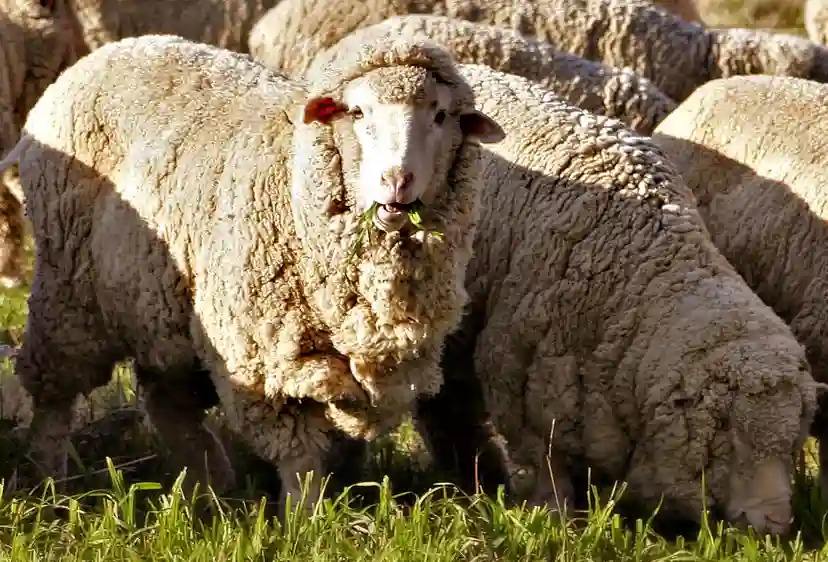
Functional differences between merino wool socks and ordinary wool socks
Definition of merino wool
Merino wool is a high-quality natural fiber derived from merino sheep. It has excellent softness, fiber fineness, and breathability, so it is widely used in outdoor sports apparel that requires high performance. Merino wool has a finer fiber structure and is significantly superior to ordinary wool in temperature regulation, moisture absorption, and comfort.
Softness
Merino wool is far superior to traditional rough wool due to its fine and soft fiber, which makes Merino wool socks softer and more comfortable than traditional wool socks without tingling sensation. Fiber fineness is an important criterion for determining the quality and grade of wool. Generally, the diameter of Merino wool fiber is 16-24 microns, equivalent to half of a hair, while ordinary wool is 27-40 microns. Merino wool is also called ultra-fine Merino wool. Its fibers are extremely fine, with a diameter of less than 19.5 microns. The diameter of higher-quality Merino wool can reach less than 11.7 microns, which is the thinner among wool varieties. A thinner fiber usually means better insulation because it more effectively captures and retains air, a natural insulator.
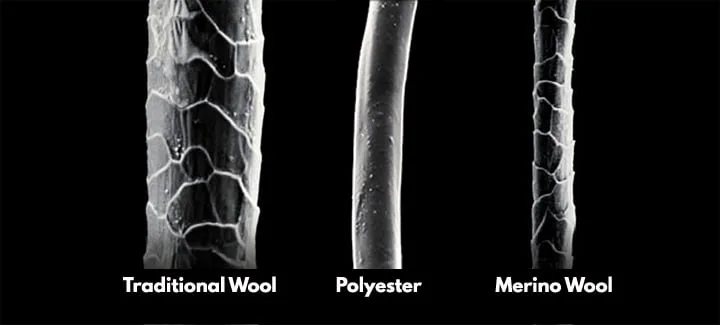
Moisture absorption and breathability
Merino wool socks have a moisture absorption rate of up to 50% of their weight, allowing them to absorb large amounts of moisture while keeping them dry to the touch. When the body becomes hot and sweats, wool fibers absorb excess water and release it into the environment outside the fabric. Therefore, Merino wool socks effectively regulate temperature and perform well in wet and cold environments. In contrast, ordinary wool has a lower moisture absorption rate of about 20%, meaning that under the same conditions, ordinary wool has less moisture absorption and removal than merino wool.

With its excellent moisture absorption and breathability properties, Merino wool socks are suitable for use in cold and warm environments. It keeps the body warm when it’s cold and sweats to cool it down when it’s warm. This performance comes from its unique fiber structure, which many experiments have verified. It is widely used in outdoor sports apparel to ensure a comfortable, dry-wearing experience even in extreme weather conditions. In addition, merino wool socks have anti-static properties due to its moisture-absorbing properties, which effectively prevent static build-up in winter or dry indoor environments, making it more comfortable to wear.
Data Resource:https://www.textileschool.com/162/wool-fiber-basics-characteristics-properties/; https://textiletrainer.com/best-15-physical-properties-of-wool-fiber/
Anti-odor
Merino wool’s advantages in anti-odor properties because of its unique fiber structure and natural antibacterial properties. Merino wool socks can absorb more moisture than ordinary wool socks and quickly expel moisture, which allows them to effectively reduce odor generation when worn for a long time. Research has shown that wool fabrics smell significantly less after wearing than fibers such as cotton and polyester. A study in New Zealand found that the intensity of body odor from wool fabrics was 66% lower than polyester and 28% lower than cotton. This difference is mainly due to Merino wool containing natural lanolin, which inhibits bacterial growth and reduces the accumulation of odors.
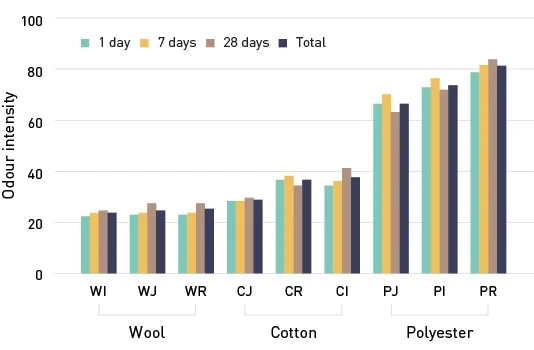
In contrast, the fibers of ordinary wool are relatively rough and have less moisture absorption than Merino wool. Therefore, sweat cannot be quickly discharged when worn for a long time, making the odor more likely to remain. These properties have made merino wool one of the materials of choice for outdoor sports brands, and it is widely used in the design of functional apparel and athletic socks to ensure a comfortable, breathable wearing experience even in extreme environments.
Temperature regulation
The thermoregulatory properties of merino wool make it suitable for cold climates and variable and warm environments. Merino wool helps the body to maintain an average body temperature in response to temperature changes: in cold environments, it traps heat through its fine fiber structure to keep the wearer warm; when it is warm or during intense exercise, the merino wool fibers quickly release heat, helping the wearer to avoid overheating. This ability to regulate temperature is due to its natural moisture wicking and breathability, making Merino wool socks ideal for extended outdoor activities as they provide a dry and comfortable wearing experience, enhanced by a soft fleece lining for added comfort.
According to the Textile Research Journal and the International Journal of Clothing Science and Technology, Merino wool’s excellent thermoregulatory properties make it a high-quality functional fiber. It is widely used in outdoor and sports activities as well as as protective equipment.

Warmth
Merino wool socks provide significantly better warmth than ordinary wool socks in cold conditions, especially in wet and cold environments. Due to its higher fiber fineness (typically 17-21 microns) and natural crimp structure, Merino wool creates more air layers which are effective in trapping and retaining heat, providing lightweight but efficient warmth. Research has shown that wearing Merino wool socks in cold conditions of -10°C can raise the temperature of the feet by 3-5°C, and the sustained warmth performance in cold conditions is superior to that of ordinary wool socks.
Merino wool socks are available in a variety of lengths, including knee-length socks, calf socks, and crew socks, to provide maximum coverage and warmth in extreme environments such as skiing and mountaineering, while ankle socks and low-cut socks are also popular for outdoor activities because outdoor activities prioritize flexibility and breathability.
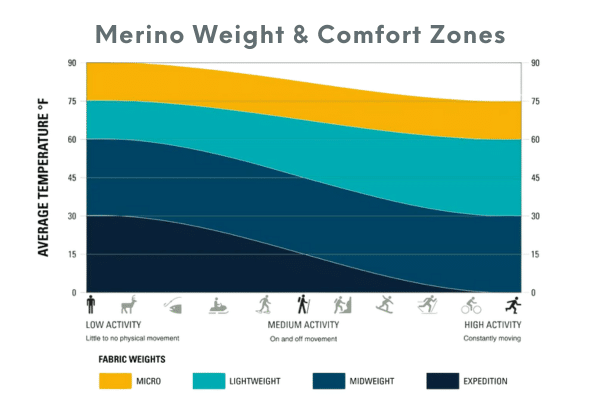
Durability
These wool fibers are naturally highly elastic and can recover their original shape when stretched or pulled, and are not easily deformed, while ordinary wool has relatively low durability due to its thicker fibers and simple structure, and is more likely to lose its shape after repeated washing and stretching. The durability of merino wool enables merino wool socks to withstand high-intensity use in outdoor sports and everyday wear, greatly prolonging the sock’s life and making it an ideal choice for consumers who seek quality, durability, and washability.

Impact of different contents of merino wool socks on performance and costs
The differences in functionality and price of Merino wool socks with different contents are first seen in the high-content products of premium brands. For example, high-content merino wool socks (70% or more) usually range from $20-$30, represented by high-end outdoor brands such as Smartwool and Icebreaker. These socks are widely used in the outdoor sports market in severe cold environments such as skiing and mountaineering due to their superior warmth, odor resistance, and breathability. According to market data, Merino wool socks with more than 70% content are about 40% warmer in cold environments than Merino wool socks with lower content. Although the cost of such socks is relatively high, they have a high price premium in the high-end market and are popular with the performance-oriented outdoor sports crowd.
For medium-content merino wool socks (30%-70%), common brands include Darn Tough and Minus33, with a price range of about $15-$20. These socks offer a good balance of warmth, moisture-wicking, and durability, making them ideal for everyday sports and casual use. Medium-content merino wool socks offer both comfort and a good price/performance ratio, meeting the needs of customers who demand functionality and budget. User reviews show that merino wool socks with a content of around 50% perform well in all seasons of wear and provide a good experience in daily sports and outdoor activities.
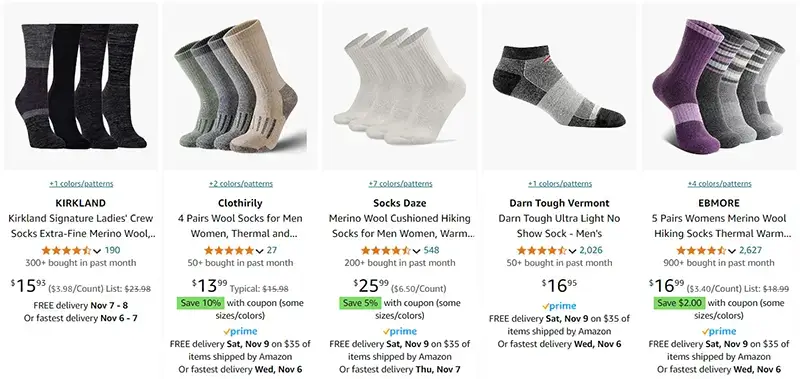
Low-content merino wool socks (below 30%) are mostly found in price-sensitive brands such as mass retail brands Kirkland and Uniqlo, which are usually priced below $10 for the general consumer market. Although low-content products are not as good as high-content products in terms of warmth and odor resistance, they still have the basic functions of merino wool used in daily basic use, such as moisture absorption, perspiration, and antibacterial effects, making them ideal for consumers with limited budgets. Low-content merino wool socks in the mass retail channel are widely recognized for daily basic use.
Industry applications and market demand (business opportunities)
Merino wool socks are widely used in various professional applications due to their excellent warmth, moisture-wicking wicking and durability properties, which provide significant premiumization and high-end market value. In industries as diverse as outdoor sports and adventure, industrial applications (e.g., mining and construction), scientific research and military, and aerospace and cold-weather transportation, merino wool socks offer unique performance benefits that meet the comfort and durability needs of industries in extreme conditions, providing high-value market opportunities.
Outdoor sports and adventure industry
In the outdoor sports and adventure industry, merino wool socks are ideal for athletes and explorers in extreme environments such as skiing, snowboarding, mountaineering, and hiking due to their durability, high warmth, and all-weather suitability. With its unique thermal regulation and moisture-wicking properties, merino wool can deal with drastic temperature changes with excellent performance, effectively keeping feet dry and comfortable. As the popularity of outdoor sports grows, the range of applications for merino wool socks continues to expand. Whether hiking, camping, or ice fishing, more and more outdoor sports enthusiasts are choosing Merino wool socks to meet the need for warmth and moisture during outdoor activities.

According to the Outdoor Industry Association, the global outdoor apparel market is expected to grow at a CAGR of 5.2% over the next five years, with demand for high-performance warm wool socks in Europe and the U.S. in particular increasing significantly, and is expected to grow up to 40% by 2025. According to other data, 87% of outdoor consumers consider warmth and moisture-wicking as the primary factors for choosing outdoor socks. This presents a huge business opportunity for brands to target the high-end market in Europe and the U.S., and develop wool socks adapted to different outdoor environments, including sports socks for football, basketball, cycling, and running.
Industrial applications: mining and construction
In industrial applications such as mining and construction, the features of excellent warmth and abrasion resistance of merino wool make it ideal for low-temperature working environments. Provides comfort and durability for laborers who spend long hours in harsh environments, especially when paired with bulky boots. According to the Institute for Labor Studies, more than 65% of construction workers and miners prefer socks with warmth and friction-resistant properties during winter.
In addition, the demand for high-performance work socks in industrial applications will grow at an annual rate of 8% in 2023, and this trend is expected to continue to rise. This has brought an opportunity for the labor protection market to promote Merino wool socks. In response to this demand, labor protection brands can enhance the competitiveness of their socks in the market by adding wear-resistant materials and optimizing warmth-retaining designs to customize merino wool work socks for miners and construction workers to meet the requirements of working conditions.

Scientific research and the military industry
Merino wool socks are the ideal choice for researchers and navy or army personnel because of their outstanding performance in extreme sub-zero temperatures. Under the harsh conditions of tens of degrees below zero, merino wool socks with stabilized warmth can help them maintain their body temperature and dress comfort during long tasks to enhance their work efficiency.
Demand for merino wool socks in the military supply market is expected to grow by about 12 % over the next three years, and about 78 % of research and military supply personnel surveyed reported that wool socks significantly improved their comfort and productivity in extremely cold conditions. So munitions and expedition equipment brands can develop customized merino wool socks with additional waterproofing or anti-static features to enhance the product’s adaptability.
Data Resource: https://www.expertmarketresearch.com/reports/merino-wool-market;https://www.qyresearch.com/reports/3289547/merino-wool-socks

Aerospace and Extreme Cold Transportation Industries
In the aerospace and extreme cold transportation industries, pilots and long-distance drivers in arctic regions have to endure harsh cold temperatures, so their socks must provide long-lasting warmth and comfort to alleviate discomfort over long periods. Merino wool socks are ideal for this market due to their superior warmth. According to the data, the demand for warm apparel in the freezing transportation industry has increased by about 15%, with a robust demand for wool socks. At the same time, 87% of cold transportation workers consider comfort and warmth the premier factors in choosing work socks.
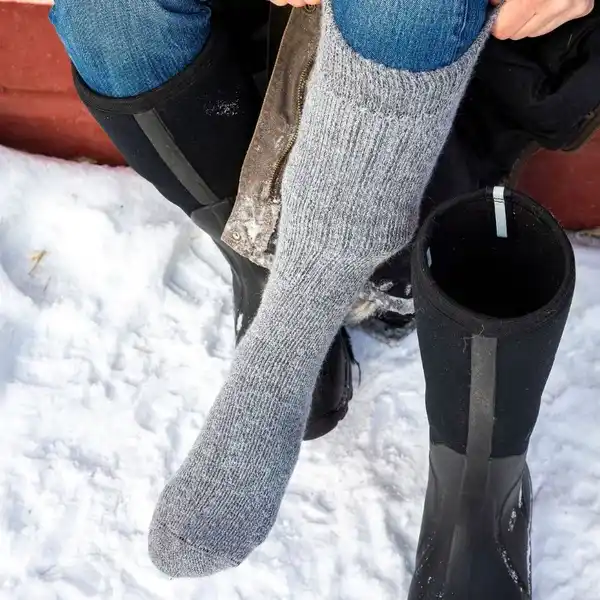
Environmental and sustainable advantages of merino wool socks
As a natural fiber, Merino wool is gradually taking an important position in the global textile market with its excellent environmental and sustainability characteristics, especially in the North American and European markets, where demand for environmentally friendly materials is rising. Unlike synthetic fibers, merino wool isn’t just a 100% renewable resource, and has excellent biodegradability: undyed and unprocessed merino wool socks can take only 6-12 months to decompose completely in the natural environment, with little or no pollution of the soil and water, while synthetic fibers can take decades or even hundreds of years to decompose and produce environmentally harmful microplastics in the process. As consumers become more environmentally conscious and low-carbon lifestyles spread, this characteristic of merino wool makes it an ideal textile material in line with global environmental trends.
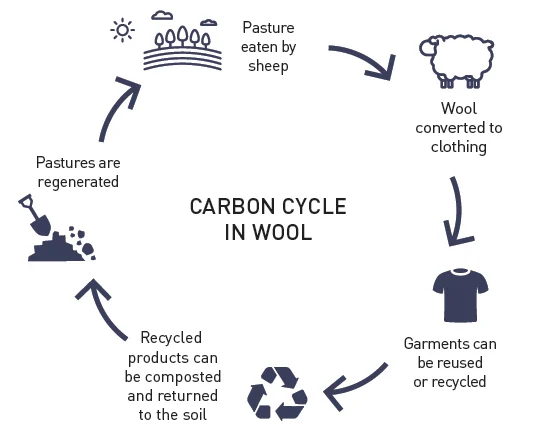
Market data shows that more than 60% of consumers in Europe and the US will prioritize eco-friendly materials when shopping for outdoor products in 2023, while around 70% of outdoor sports consumers will prioritize natural ingredients and sustainability as important considerations for their purchases. With demand for natural, renewable textiles in Europe, particularly in the Nordic region, growing at a rate of 8% per annum, Merino wool has great potential to be widely used in these markets. Environmental certifications, such as ‘OEKO-TEX’ and ‘Woolmark’, enable brands to further validate the environmental friendliness and sustainability of their wool sources, giving consumers greater confidence in the quality of their socks and their commitment to the environment.

This environmental certification is extremely important for the brand’s influence in the European and American markets. Some well-known brands, such as Patagonia and Icebreaker, have regarded the environmental characteristics of Merino wool socks as their core selling point. They have successfully attracted environmentally conscious high-end customers by emphasizing product performance and integrating its sustainability benefits into the brand image. Data shows that consumers are more willing to pay a premium for certified, environmentally friendly socks, which provides a good opportunity for brands to gain a differentiated advantage with Merino wool.
Choosing Merino wool socks caters to market demand and brings significant brand benefits for companies that place sustainability at the core of their strategy. By strengthening environmental certification and emphasizing the eco-friendliness of wool products, and utilizing the wide application of merino wool in outdoor sports and functional apparel, the brand could meet the needs of consumers for both high performance and environmental protection, and consolidate its leading position in the eco-friendly textile market.
Current market pain points
Despite the significant advantages of Merino wool socks in terms of performance, environmental friendliness, and sustainability, they still face some pain points in their marketing.
Higher price
The high production cost of merino wool directly leads to the high selling price of its end products. Compared with ordinary wool or synthetic fibers, the price of merino wool socks has made it difficult for some consumers, especially bulk purchasing customers, to accept it, which has become a barrier to the popularity of merino wool socks. Retailers and online e-commerce platforms often face price competition when promoting merino wool socks, with many consumers looking for alternatives in a lower price range. To this end, brands can consider launching lower-content merino wool blend socks, which retain the core characteristics of wool while effectively controlling costs and attracting a broader consumer base.
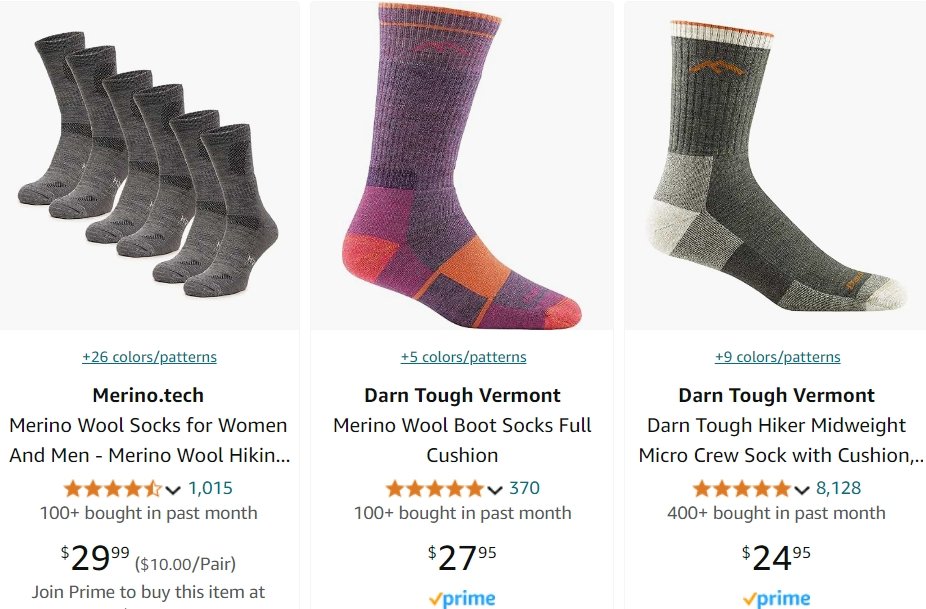
Limited application scenarios
Merino wool socks are known for their high warmth performance and are suitable for outdoor use in cold climates. However, they may seem heavy in warm or humid environments, leading to a perception of over-functionality among some consumers and affecting sales in these markets. As a result, retailers and brands need to be more precise in their market segmentation when promoting merino wool socks to ensure sock products fit local climatic conditions and customer needs.
However, it is worth noting that merino wool socks have natural thermoregulatory properties that can help wick away sweat and keep you dry in warm climates. Brands can focus on promoting Merino wool socks’ thermoregulatory and anti-bacterial, and anti-odor benefits, such as their ability to wick away moisture and reduce discomfort from perspiration in summer outdoor sports and hiking scenarios, making it particularly suitable for extended periods of wear or travel.
Material supply and sustainability issues
Although merino wool is a renewable resource, the potential impact of its production on the ecological environment and animal welfare has attracted the attention of consumers and environmental groups. For example, sheep farming is water-intensive, and there is the potential for improper or unethical treatment of animals during the wool production process. Some sustainability-conscious consumers are choosing sock products that emphasize transparency and sustainability in the source of the wool, so brands can enhance the transparency and environmental credibility of their sock products by obtaining organic or sustainable farming certification. Certifications such as OEKO-TEX or RWS (Responsible Wool Standard) can enhance a brand’s competitiveness in the eco-friendly marketplace and attract environmentally conscious consumers.

Easily counterfeited or blended
As the market recognition of merino wool socks continues to grow, counterfeit or low-content blended socks have also appeared. Although these socks are labeled as containing merino wool, the actual content is low. It does not provide the true functionality of the raw material, which can easily lead to a poor consumer experience and damage market reputation. Brands and retailers can strengthen product certification and labeling to mark wool content and quality standards to enhance consumers’ trust in products. For example, to ensure that sock products comply with the content standard of merino wool by providing a content test report or quality certification can effectively enhance brand image and market professionalism.
Effects on allergic groups
Merino wool fibers are delicate and soft enough to be worn by most people, but for a small number of people allergic to wool, wool socks may cause skin irritation or discomfort. This limits its application to some extent. For allergic consumers, brands can offer more alternative products or clearly label relevant information to help customers avoid unnecessary risks. For example, some brands can launch merino wool socks with anti-allergy treatment or clearly label the allergy risk in their marketing so that consumers can make well-informed choices.

Conclusion
Through the analysis of this article, it can be seen that merino wool socks are superior to ordinary wool socks in terms of moisture absorption, temperature regulation, and antimicrobial properties, which are especially suitable for outdoor and industrial applications that require high functionality. In addition, the environmentally friendly properties of merino wool align with the current trend of green development.
However, there are still pain points in the market, such as high cost, limited application scenarios, and the need for environmental certification. Overcoming these challenges while meeting customer needs is an important issue for brands when expanding the market for Merino wool socks. Suppose your brand is looking for a high-quality and sustainable wool sock partner. In that case, our factories can provide customized merino wool sock production services to help your brand stand out in terms of differentiation and quality, and gain a competitive advantage in the market.
FAQ
Is Merino Wool suitable for hot weather?
In the summer, Merino Wool helps to wick away sweat and keep the skin dry and cool because of its natural breathability and moisture-wicking properties. It also has anti-odor properties to keep feet fresh even in hot and humid environments.
What is the optimal wool content for Merino Wool socks?
The best wool content for merino wool socks depends on your needs and preferences. According to real user reviews, 50% or more merino wool socks are better for year-round wear.
How to wash Merino Wool socks?
– Water Temperature: Wash in warm or cold water. Avoid high temperatures as this will shrink the wool.
– Wash Mode: Choose a gentle wash mode, preferably using your washing machine’s special wool wash program.
– Detergent: Use pH-neutral detergent for wool. Avoid acidic detergents that may damage wool fibers.
– Best air-dried. If using tumble drying, please use the low temperature setting.
